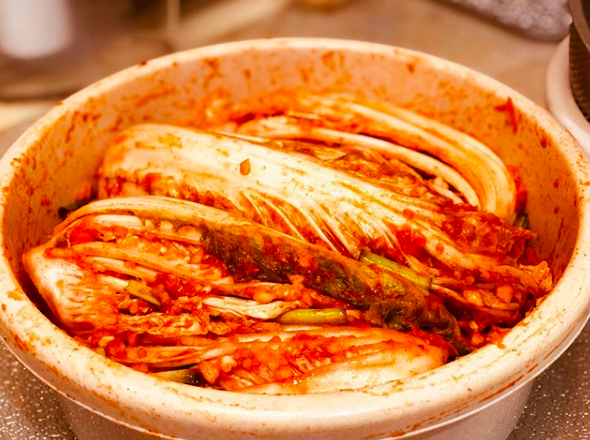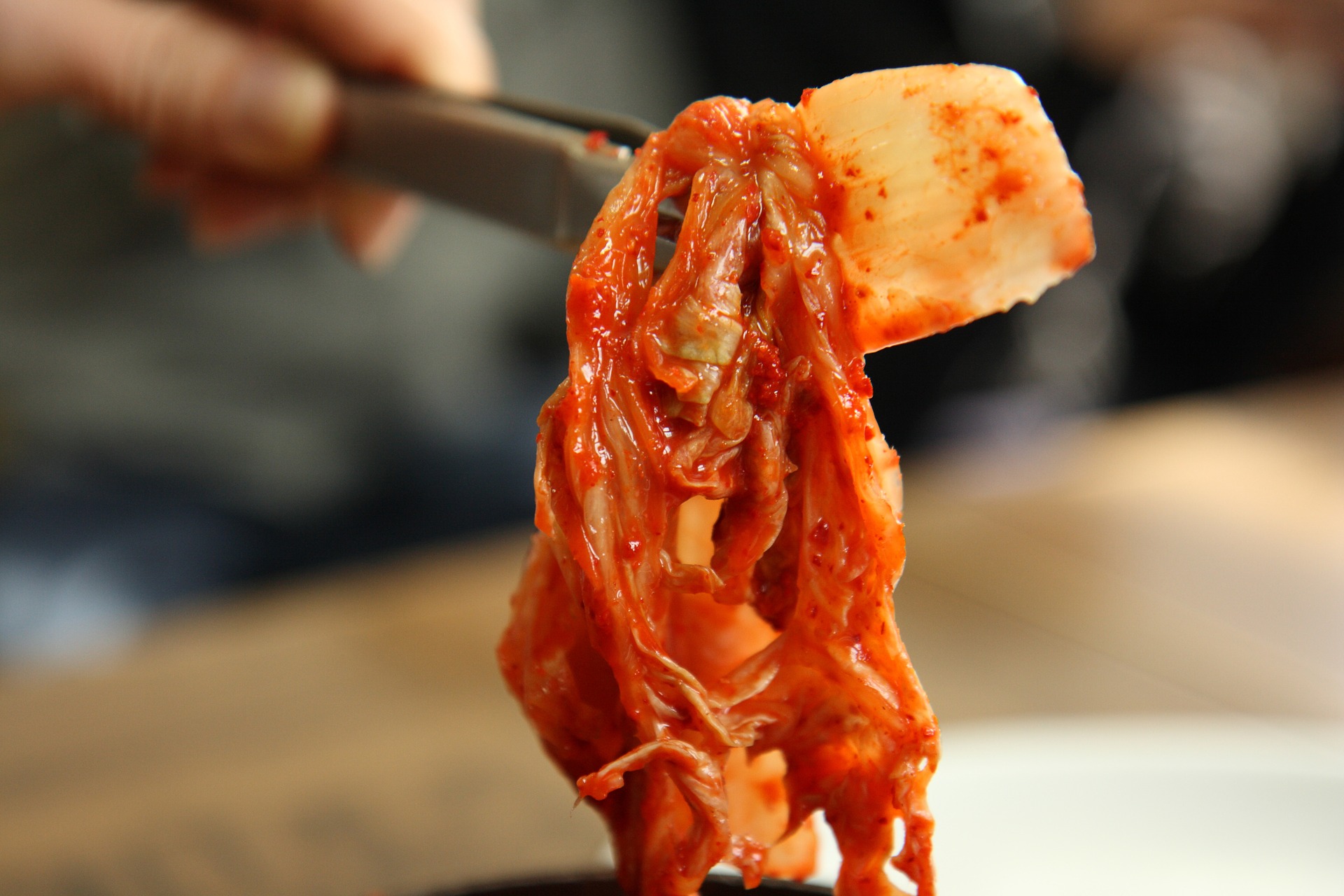Kimchi, a staple in Korean cuisine. It is a famous traditional side dish that consists of salted and fermented vegetables such as napa cabbage and Korean radish.
This dish is made with a wide variety of seasonings including gochugaru or chili powder, spring onions, garlic, ginger, and jeotgal or salted seafood. With the variety of ingredients used, there are hundreds of varieties of kimchi made with various vegetables.
Jeonju, Korea’s food capital, uses fish sauce to make kimchi different. Southeast Korea’s Jeollanam-do province seasons its kimchi with yellow Corvina and butterfish. Hwanghae-do’s midwestern region uses no red pepper flakes, while the southern areas feature the spiciest varieties of all.
Korean Kimchi
- Author: Romae Chanice Marquez
- Recipe Category: Side Dish
- Cuisine: Korean
The whole preparation, cooking, and resting time is 8 hours. This recipe is will fill up one jar entirely.

Follow these steps to create your homemade Kimchi. Photo credit: @food_foreveryday / Instagram.
Korean Kimchi Ingredients
- 1 large Napa cabbage, about 5 to 6 pounds
- 1 cup Korean coarse sea salt
- 6 cups water
- 2 pounds Korean radish
- 1/4 Korean pear optional
- 5 scallions
- 1 tablespoon glutinous rice powder
- 1/2 cup Korean red chili pepper flakes (gochugaru)
- 1/4 cup salted shrimp (saeujeot)
- 5 raw shrimp, about 2 ounces finely minced or ground
- 4 tablespoons myulchiaekjeot fish sauce
- 5 tablespoons minced garlic
- 2 teaspoons grated ginger
- 2 teaspoons sesame seeds, optional
- 1/2 cup water or dashima dried kelp broth
Korean Kimchi Instructions
Step 1: Cut the thick white part of the cabbage lengthwise in half. Then, slowly pull it apart by hand to separate it into two pieces. Do the same for each half to make quarters. Running the knife through all the way would unnecessarily cut off the cabbage leaves.
Step 2: Dissolve 1/2 cup of salt in five cups of water in a large bowl. Bathe every quarter of the cabbage thoroughly one at a time in the saltwater, shake off any excess water back into the bowl, and then move to another bowl.
Step 3: Sprinkle salt generously over the thick white portion of each leaf using the other half cup of salt, beginning from the outermost leaf (similar to salting a piece of meat). Start salting all the quarters of the cabbage with the 1/2 cup salt, but if necessary, you can use a little more. Repeat with the remaining quarters of the cabbage.
Step 4: Pour the remainder of the saltwater over the cabbage from the first tub. Set aside, rotating the bottom ones to the top every 2-3 hours for about 6-8 hours.
Step 5: When the white parts of the leaves are easily bendable, the cabbages should be ready for washing. Rinse 3 times thoroughly, especially between the white pieces. Drain well and then cut them side by side.
Step 6: Meanwhile, boil a small piece (2 to 3 square inches) in a cup of water for 5 minutes and cool it to make the dashima broth. Mix the rice powder with 1/2 cup water (or dashima broth) and cook over low heat, occasionally stirring until it thickens and cools to a thin paste.
Step 7: Prepare the saeujeot or salted shrimp, ginger, and garlic. Combine all seasoning ingredients and blend well, including rice paste and dashima broth. Set aside to melt slightly and become pasty, then add the red pepper flakes.
Step 8: Cut the radish and pear into matchsticks (use a mandolin if desired) and move them to a big bowl. Diagonally cut the scallions into pieces about 1 inch long. Apply the prepared seasoning mix to the radish and pear mixture and blend well by hand. Throw in the scallions and lightly mix everything. To eat as it is, it will be a little too salty. As required, you can add salt, salted shrimp, or fish sauce. Let it sit for about 30 minutes to be able to mix the flavors nicely.
Step 9: Cut off each quarter of the tough stem, leaving enough for the leaves to stay together. Put one-quarter of cabbage with the radish mix in the bowl. Spread the radish mixture over each leaf. For large leaves, use one to two tablespoons.
Step 10: Fold the cabbage’s leaf to the stem and cover it neatly with the outermost leaf. Place in a jar or airtight container, cut side up. Repeat with the rest of the cabbage pieces. Firmly press down to remove air pockets once all the cabbage is in the jar or airtight container. Rinse the bowl with 1/2 cup of water containing the radish mix and pour it over the kimchi.
Step 11: Leave it out at room temperature for a full day or two. Then, put it in the refrigerator.
Korean Kimchi Additional Information
- Kimchi was a staple of Korean culture, but it wasn’t a spicy dish in historical versions. There is no mention of garlic or chili pepper in early kimchi documents. Until the early seventeenth century, chili peppers, now a common ingredient in kimchi, had been unknown in Korea.
- This dish will take 8 hours to prepare entirely.
- This recipe will make enough kimchi to fill at least one large jar.

About Korean Kimchi Recipe
There are many different types of kimchi dishes, but cabbage kimchi is the most common meal in this genre. This pungent and often spicy meal is a source of pride for many families and is reminiscent of the taste of home.
Conclusion
Kimchi has historically been preserved in large earthenware in the ground to prevent the kimchi from being frozen in the winter months. It was the primary way to store all vegetables historically.
For more international recipes, click here.
Featured Image: @restaurantessam / Instagram.com, @shue_table / Instagram.com








